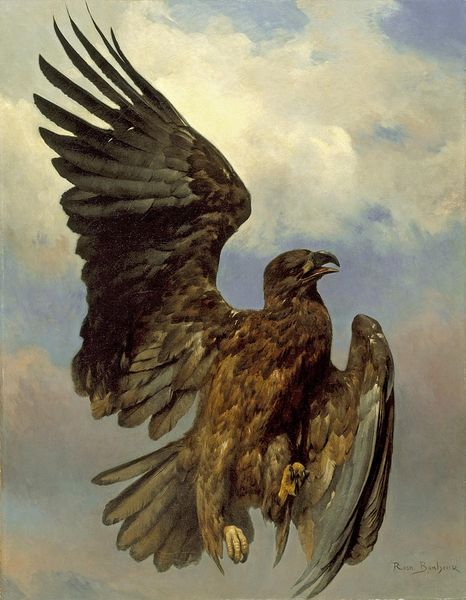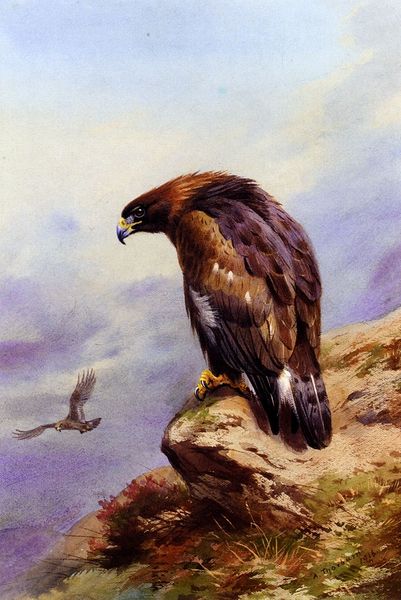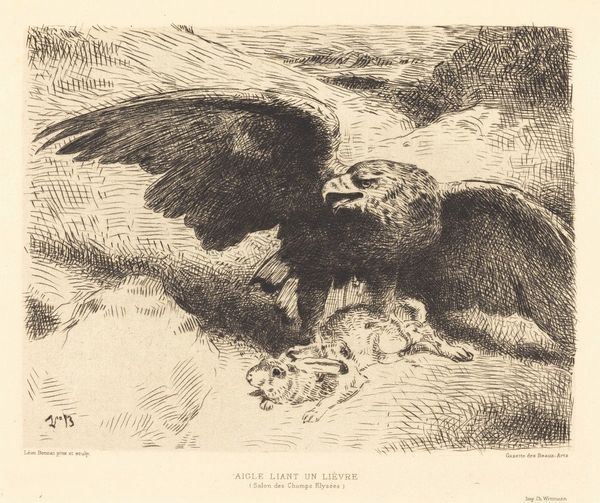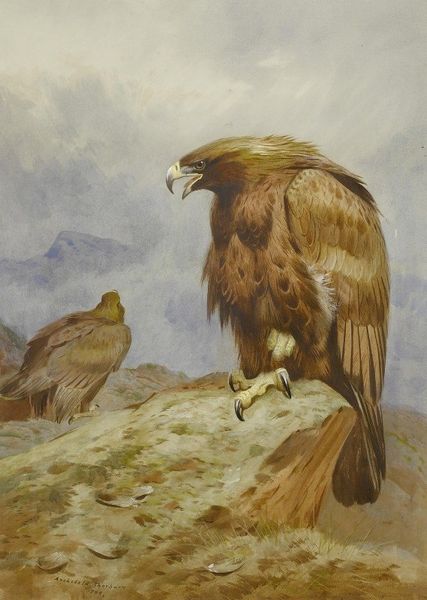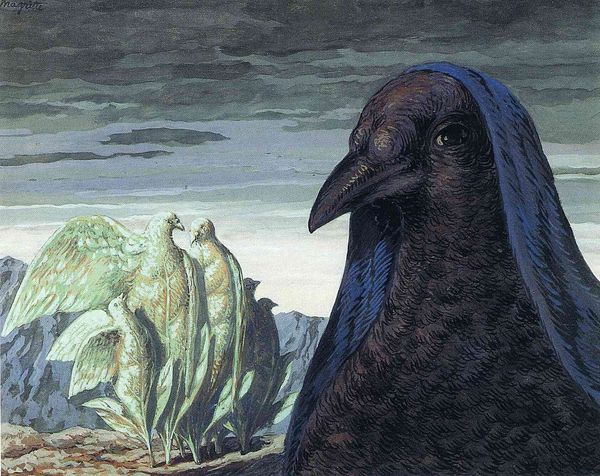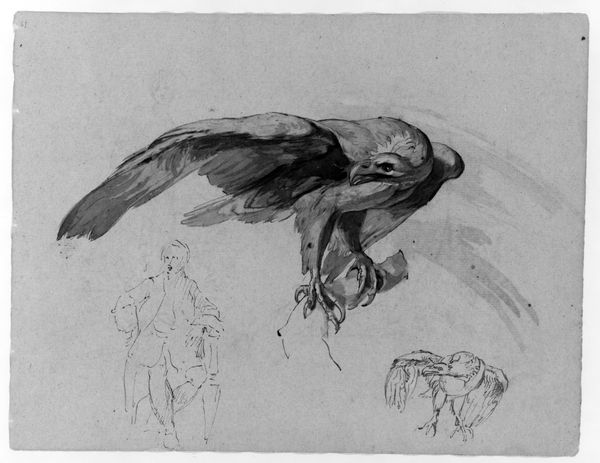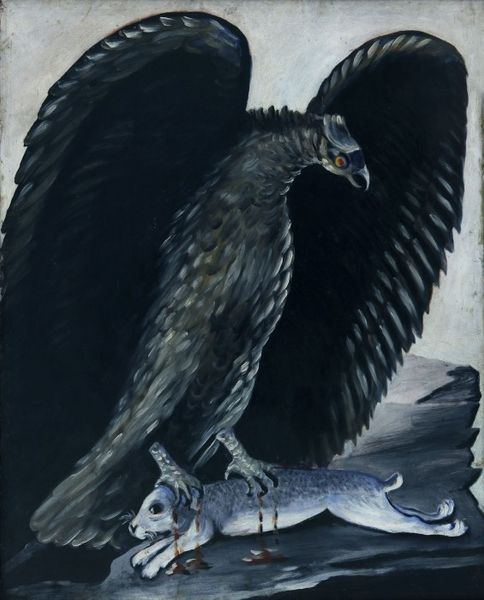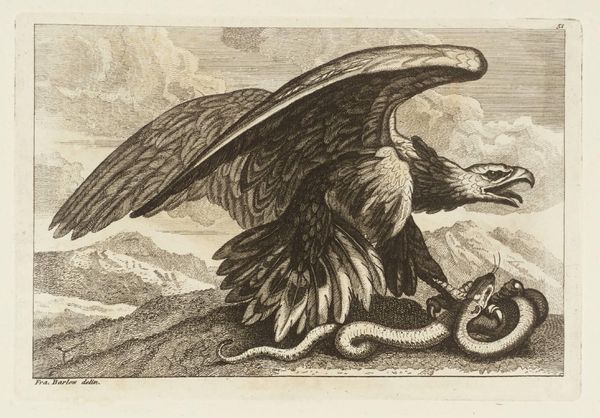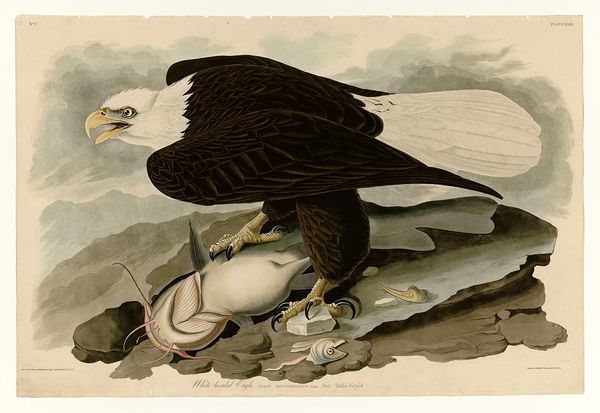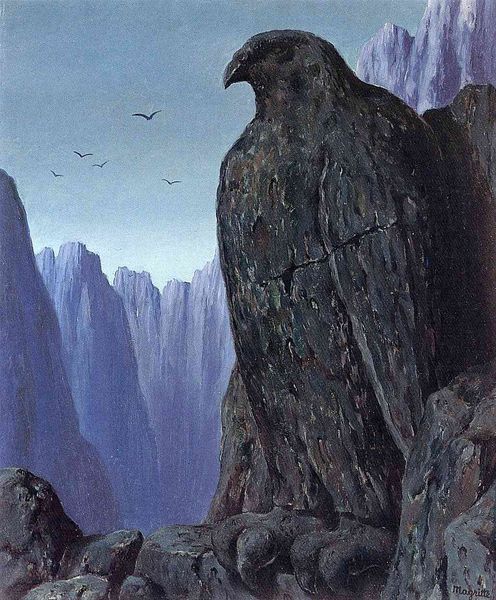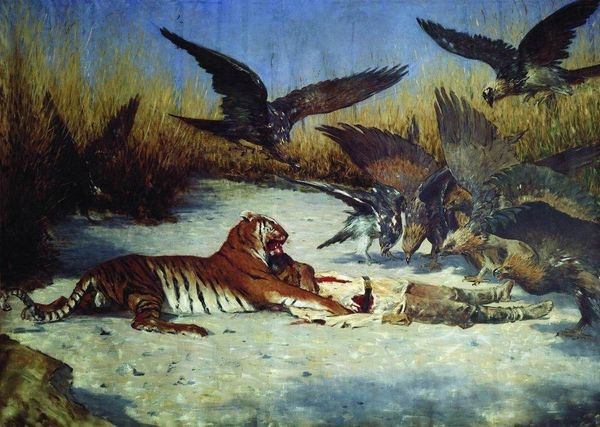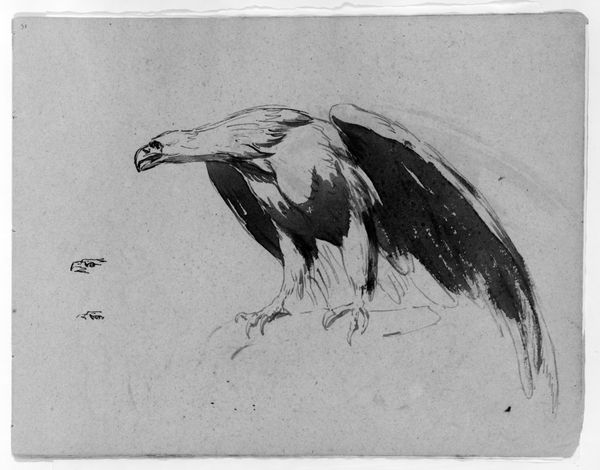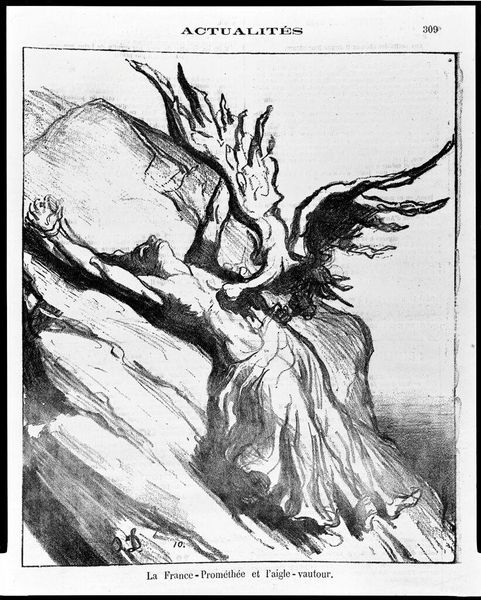
drawing, charcoal
#
drawing
#
16_19th-century
#
landscape
#
bird
#
charcoal drawing
#
charcoal art
#
oil painting
#
animal portrait
#
charcoal
#
realism
Copyright: Public domain
Editor: This drawing, "Eagle and Rabbit," created in 1897 by Léon Bonnat, uses charcoal to capture a dramatic moment. It feels incredibly tense, seeing the eagle’s dominance over the rabbit. What elements of its visual construction stand out to you? Curator: Immediately, I'm drawn to the stark contrast Bonnat achieves using charcoal. Notice the deep blacks that define the eagle's form against the subtle greys that create a landscape; this contrast amplifies the power dynamic. Consider also the diagonal thrust of the eagle's wings - how does this directional element contribute to the piece's overall composition? Editor: It definitely adds to the sense of action and the eagle’s aggressive energy. The eye is drawn upwards, following that wing. Curator: Precisely. Moreover, observe the rendering of the rabbit. Unlike the sharp, defined lines of the eagle, the rabbit is depicted with softer, almost blurred strokes. What does this signify to you in terms of representing vulnerability and life forces? Editor: Perhaps to show fragility in contrast to the predator’s strength? That softer texture makes it seem much more delicate. Curator: Indeed. Now, consider the spatial relationship. The eagle, prominently positioned in the foreground, dominates the frame, while the landscape fades into abstraction in the background. Is this a way to concentrate our attention on the central drama and isolate a narrative about the food chain? Editor: Yes, definitely, the landscape barely exists; it’s all about the interaction between predator and prey. I see now how all these formal elements work together to communicate that. Curator: Precisely, it is an encapsulation of nature’s power structures rendered visible via thoughtful exploitation of charcoal's inherent capacities for tonal variance and compositional organization. Editor: It’s fascinating how focusing on form and technique reveals so much meaning in what initially seemed a straightforward depiction.
Comments
No comments
Be the first to comment and join the conversation on the ultimate creative platform.
